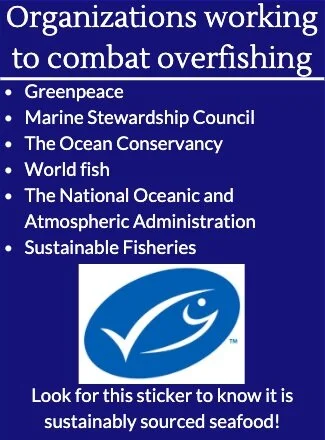Sharks are friends, not food
Why are Hawaii and California longline fisheries still catching tens of thousands of sharks each year when these incredible animals do us more good in the water?
Shark Bycatch in Longline Fisheries
Sharks make up a significant portion of the longline catch and almost none of them are kept.
Source: The Hawaii and California-based Pelagic Longline Vessels annual Report for 2018
The sea provides the largest source of human consumed protein in the world.
If oceanic ecosystems were to collapse 3 billion people, mostly in developing countries, would lose their livelihood. Sharks are an integral part of these ecosystems that so many rely upon. As apex predators they control the populations of the fish below them. They go after the sick and injured fish, removing them from the population so that the future generations will be healthier and stronger. Without sharks the populations of the fish that they eat would explode with impacts that ripple down the food chain. Eventually it would all collapse and the oceans would no longer harbor the amazing diversity of life that they do today. Without healthy populations of all the fish in the sea the delicate balance of life would be thrown off, and billions of people would lose the ecosystems they rely on for sustenance forever.
Sharks Currently make up 16% of all longline Catches
A value that is on the rise despite the number caught per 1000 hooks remaining constant
Source: The Hawaii and California-based Pelagic Longline Vessels annual Report for 2010-2018
Though the dip in the percentage of the total catch that was sharks between 2011 and 2014 suggests that there might have been some improved practices, that mysteriously stopped after 2014, this likely isn't the case. When looking at the raw numbers the number of sharks caught stays fairly constant, this dip is instead due to higher than average hauls of tuna that decrease the percentage of the total catch that are sharks. This is further supported by the constant capture of sharks per thousand hooks that is also visible on this graph. Instead, this shows that we are less efficient in catching the fish that we want on longlines. Meaning we are probably overfishing the desired tuna stocks, leading to a higher proportion of the total catch being shark bycatch.
Humans kill an estimated 100 million sharks each year.
Some of these are due to shark finning, a practice where shark fins are harvested off of live sharks, which are then tossed back into the ocean, to be sold in asian markets around the world. The sharks caught on these longline vessels may not be a part of the finning industry but the added stress put on these species due to bycatch is further depleting their populations. For this reason there are a lot of conservation groups working towards more sustainable fishing practices.
Regardless of the fact that there are mitigation strategies that have been shown to reduce the amount of bycatch in longline fisheries sharks are still being caught, and not in insignificant numbers. These mitigation strategies may not be implemented by most commercial fishermen, as they spend most of their time outside of the jurisdiction of any one country.
Most longline fishing occurs outside of US territorial seas in international waters. A huge portion of the oceans that are very poorly regulated. Individual countries have no power in these waters, so all of the regulation is up to agreements between countries that may or may not have legal consequences. This means that once these vessels are in international waters it is completely up to their integrity to follow these regulations and guidelines.
Shark bycatch is continuously going up as our fishing efforts increase.
Source: The Hawaii and California-based Pelagic Longline Vessels annual Report for 2010-2018
We haven’t done enough to reduce the impact that our fishing practices have on these apex predators.
Though we are becoming more aware of the importance of sharks, little is being done to reduce their bycatch. Most of the sharks caught through longline fishing are released, but this doesn't mean that they survive the stress of being captured on a fishing line for hours on end and hauled onto a fishing vessel before being thrown back into the water.
Just because sharks are released doesn’t mean they will survive.
Imagine being caught in a glass box that started filling with water. No one was around that could help and you were slowly being submerged almost to the point where you couldn't breath.
Suddenly you are yanked out of the box and thrown against a wall. Then the people who threw you looked at you and just said, "we don't need them. Let 'em go." Would you be able to go about your daily life after that? Probably not. A more extreme version of this is what we do to sharks every time we haul them in as bycatch on a longline.
33% of the world's fisheries are unsustainable!
What can we do about it?
As consumers we have the power to show producers what we want and what we don't support. Producers tend to follow the practices that make them the most money. Currently those practices also happen to result in a lot of bycatch. If we, as consumers, stop buying fish captured using unsustainable methods, then the fisheries will have to convert to more sustainable practices. Not only will this help animals, such as sharks who are being unintentionally captured, but it will also help to ensure that future generations will continue to be able to rely on the oceans for food and their livelihood.
Please share this blog post and/or the infographic linked here with your friends and family. the more people who know about what we are doing to sharks and the oceans as a whole, the more change we can incite!
Sources: https://savethesea.org/STS%20ocean_facts.htm
https://www.oecd.org/ocean/topics/developing-countries-and-the-ocean-economy/
https://ocean.si.edu/ocean-life/sharks-rays/shark-finning-sharks-turned-prey
https://www.nyulawglobal.org/globalex/International_Fisheries_Law.html
https://www.hakaimagazine.com/news/sharks-even-catch-and-release-can-kill/
https://sustainablefisheries-uw.org/fact-check/how-many-fisheries-are-overfished/





